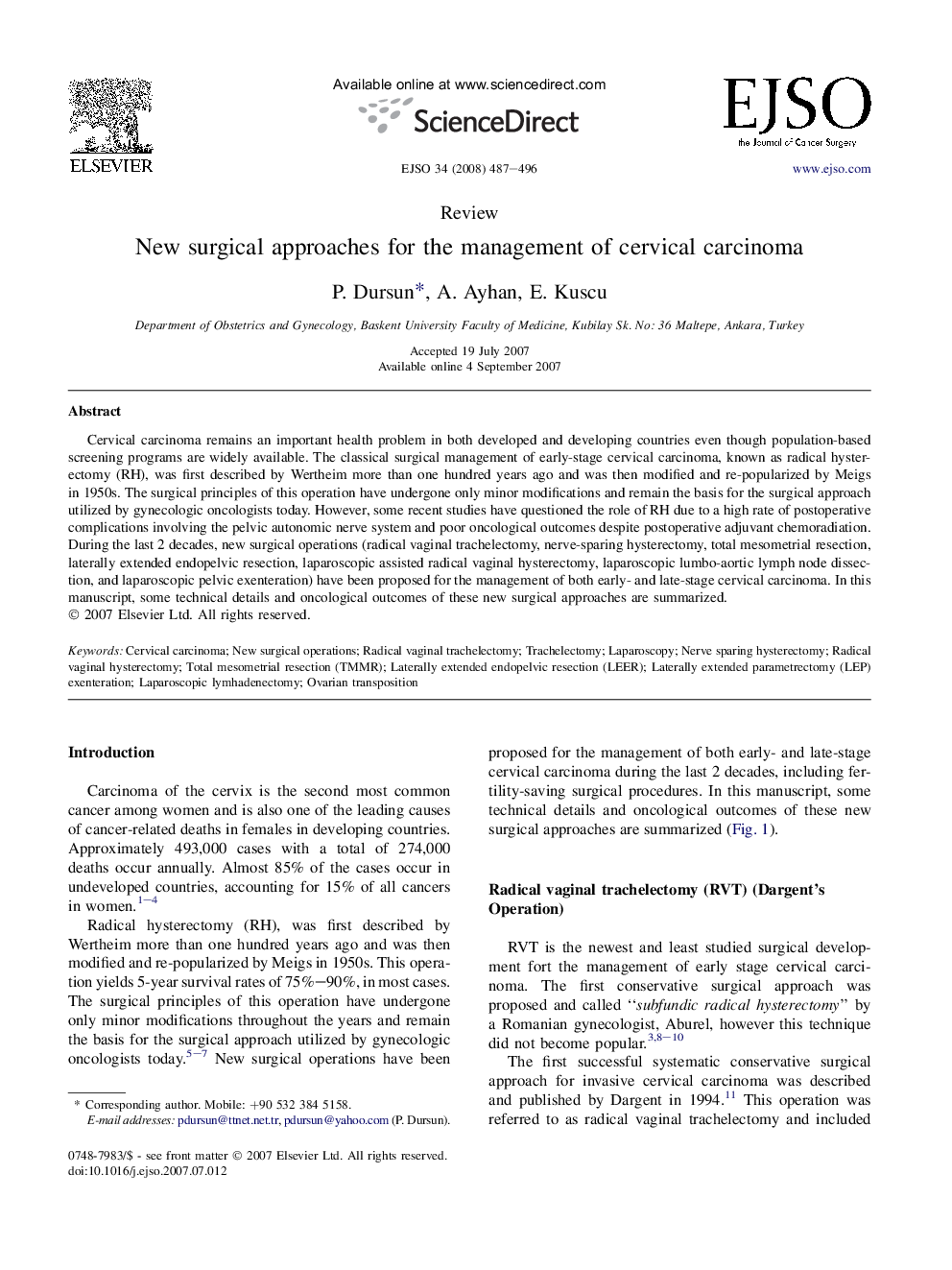| Article ID | Journal | Published Year | Pages | File Type |
|---|---|---|---|---|
| 3988270 | European Journal of Surgical Oncology (EJSO) | 2008 | 10 Pages |
Cervical carcinoma remains an important health problem in both developed and developing countries even though population-based screening programs are widely available. The classical surgical management of early-stage cervical carcinoma, known as radical hysterectomy (RH), was first described by Wertheim more than one hundred years ago and was then modified and re-popularized by Meigs in 1950s. The surgical principles of this operation have undergone only minor modifications and remain the basis for the surgical approach utilized by gynecologic oncologists today. However, some recent studies have questioned the role of RH due to a high rate of postoperative complications involving the pelvic autonomic nerve system and poor oncological outcomes despite postoperative adjuvant chemoradiation. During the last 2 decades, new surgical operations (radical vaginal trachelectomy, nerve-sparing hysterectomy, total mesometrial resection, laterally extended endopelvic resection, laparoscopic assisted radical vaginal hysterectomy, laparoscopic lumbo-aortic lymph node dissection, and laparoscopic pelvic exenteration) have been proposed for the management of both early- and late-stage cervical carcinoma. In this manuscript, some technical details and oncological outcomes of these new surgical approaches are summarized.
